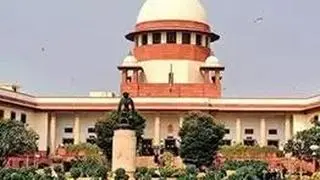It is said that science without history is like man without memory. Late economist Joseph Schumpeter, too, said, “We do stand to profit from visits to the lumber room provided we do not stay there too long.” As we celebrate India’s 75th independence day, there are quite a few valuable heirlooms in India’s treasure chest from which we stand to profit. The cobwebs of colonial mindset and the post-colonial socialist mindset had prevented us from opening and taking a focused peek into the treasure chest.
A century ago, Kautilya’s political economy treatise Arthashastra was found in the possession of a pundit from Thanjavur. The treatise was written circa 350 BCE. Over the decades, quite a few have written on the seminal contribution of Kautilya. Interestingly, Kautilya had made references to Shukracharya who had written the treatise Shukraniti much earlier. References to Shukraniti are also found in Mahabharata and Buddha’s biography Buddhcharitam. While the original Shukraniti treatise was lost with the passage of time, an abridged treatise Shukranitisara was found in 1851 in the Maratha Princely State of Baroda. Shukranitisara is a unique treatise written at the cusp of time when Indian kingdoms were on the decline and the British colonial period was about to begin.
Utility maximisation
Advances in behavioural economics have begun to re-examine the nuances of self-interest and the singular objective of utility maximisation. The literature seems to imply that human wellbeing is a multi-goal construct. These goals are related to social relations, community wellbeing, health, career, and, of course, the financials. Beyond self-interest, there are moral values that an individual possesses which Amartya Sen calls ‘commitments’. It is not just economic incentives but moral nudges that decide our behaviour.
For ancient Indians, welfare was not a unidimensional concept where individuals maximise utility. Individuals have four-fold Purusharthas or life objectives – Dharma (righteous conduct), Artha (material acquisition), Kama (artistic and sensual pleasures), and Moksha (liberation). While Kautilya had given primacy to Artha , in Shukranitisara the emphasis is on Dharma . Admittedly, the Sanskrit word ‘Niti’ in Shukranitisara means righteous policy and ‘Artha’ in Arthashastra means material acquisition.

Shukracharya asserts that the King and his ministers must be guided by the science of polity. Without understanding the moral compass, a king is like a leaking vessel unable to hold water. Shukracharya famously wrote, “There is no letter which doesn’t have the power of counsel, there is no plant-root that cannot be used as a medicine, there is no person who is unqualified, but rare is the one who makes a judicious use of all of them. Clearly, his emphasis was on judicious conduct. Indian politicians, decision-makers, and economists would all agree while modern welfare policies are formed on the basis human incentives, unless there is dharmic buying-in from stakeholders, success rate of such policies is low.
The treatise prescribes administrative expenses of the government should not exceed 50 per cent of the revenues and the rest must be spent on public goods like roads, dams, and education. In modern terminology, this is akin to avoiding revenue deficits by the welfare State. Among other things, the treatise mentions that State should maintain buffer stocks of food grains which will be sufficient to meet demand for three years. Today, Indian government does maintain sufficient buffer stocks, which had come handy in distributing grains to the poor and the migrant workers amidst Covid crisis. The author warns not to tax people too heavily. King imposing excessive taxation is compared to a producer of coal who sets fire to the woods to make charcoal but ends up burning the entire forest. This idea shows an innate understanding of the concept of Laffer curve suggesting optimal tax rate and tax revenue.
Counsel for householder
The author also had a dharmic or moral counsel for the householders. The treatise identifies 64 vocational skills and 32 sciences which constitute the broad canvas of an economy. While a householder would do good to earn money using these skills and sciences, he advises the householder to be a good family person. It was the householder’s duty to look after the immediate family and also help extended family of the couple. He then goes on to share that the institution of marriage is based on competing attributes sought by the family members and the society. In one of his witty shlokas he observes, “While a bride (groom) seeks a life-partner to be handsome (beautiful), a mother cares for financial stability, a father looks for scholarship, friends are inquisitive about clan, and the rest are only interested in food and festivities.” The message is very relevant today, where family members are going after making big bucks but losing out on human relations and family values.
Shukranitisara can be described as a unique treatise on science of political economy. It underscores that the ruler and the ruled have to conduct their economic decisions keeping the dharmic compass in mind.
The author teaches economics at IIM Ahmedabad








Comments
Comments have to be in English, and in full sentences. They cannot be abusive or personal. Please abide by our community guidelines for posting your comments.
We have migrated to a new commenting platform. If you are already a registered user of TheHindu Businessline and logged in, you may continue to engage with our articles. If you do not have an account please register and login to post comments. Users can access their older comments by logging into their accounts on Vuukle.